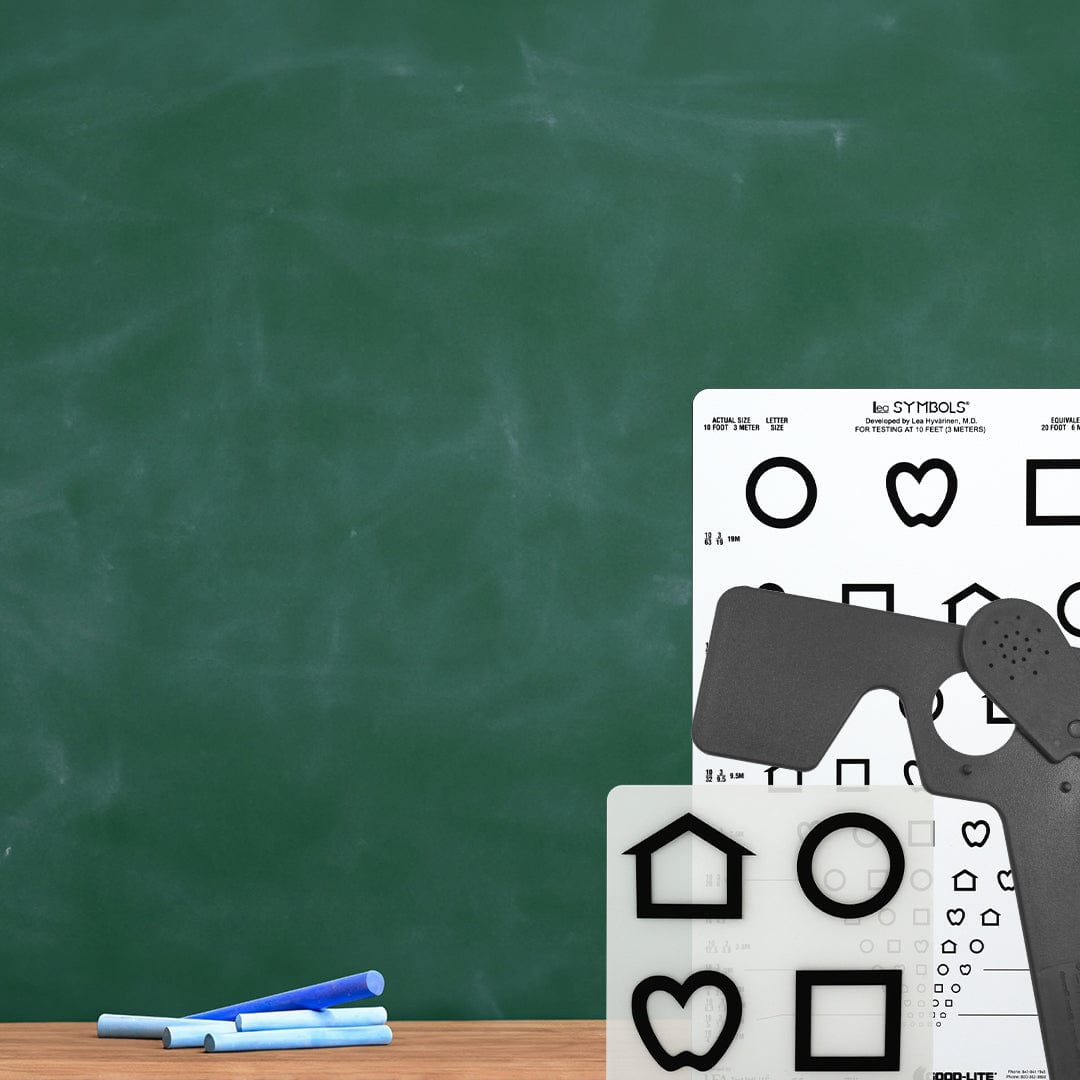LEA Symbols and Test Systems
Background
Lea Testing Systems encompass a series of tests (40 in all) that use specially designed symbols and other images that can be used to test pediatric patients as well as those who are illiterate or have trouble recognizing certain letters. The tests were developed by a well-known ophthalmologist, Lea Hyvärinen, in the 1970s. Dr. Hyvärinen travelled from Finland to study at Johns Hopkins in Baltimore. At the end of her studies, she became interested in developing testing that could more easily test infant vision. Infants are particularly difficult to test because they cannot read numbers or letters. Dr. Hyvärinen understood the importance of developing a standardized way to evaluate vision at an early stage in life. Early detection of vision problems can help avoid any developmental issues that can occur when children have undetected vision loss.
Lea Symbols
The first test developed by Dr. Hyvärinen used well-known symbols that were easy for children to recognize. These include Apple, Pentagon, Square and Circle. Unlike other symbol tests used at the time, Dr. Hyvärinen took steps to ensure that each symbol was the proper shape and stroke width (the width of the black part of the letter) so that each symbol had equal visibility. In this way a child would not recognize one symbol over another just because it was easier to see. She also calibrated her test against the well-known standards for visual acuity. In this way, a pediatric patient could be assigned a valid visual acuity score, unlike other symbol tests available at the time. These Lea Symbol tests are now available in charts, as puzzles, on vision testing slides, in computerized format and in many other formats.
Lea Numbers
With the success, acceptance, and recognition of the Lea Symbol test, Dr. Hyvärinen went on to develop the Lea Numbers tests. These tests used the same concepts as the symbol test; that is, all numbers had equal visibility and were calibrated against standard visual acuity scores. These numbers tests are used across a much wider population, including adults.
Lea Grating and Preferential Looking Tests
Subsequently, Dr. Hyvärinen developed a series of tests using gratings and other images, including faces (e.g., Heidi). This allowed clinicians to use a preferential viewing technique, where the children could be tested at even younger ages, before they could recognize symbols. The preferential looking technique relies on the clinician to determine where the child is looking to make an assessment as to whether the child can see the image. This analysis can lead to a standardized visual acuity score.
Contrast Testing
Many of the tests described above have now been adapted to contrast testing, wherein the Symbol, Number and other tests are presented at the typical black-on-white setting, as well as at lower levels of contrast. Testing at the lower contrast levels allows the vision specialist to determine how patients can see contrast levels in the real world, not just black and white.



